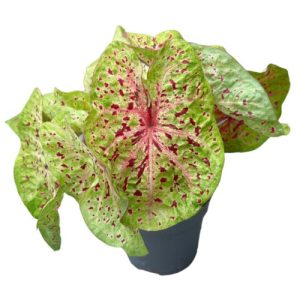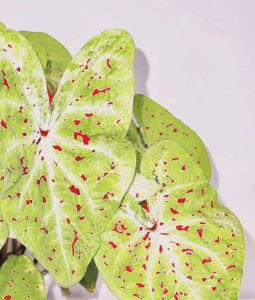- English
- Chinese
- French
- German
- Portuguese
- Spanish
- Russian
- Japanese
- Korean
- Arabic
- Irish
- Greek
- Turkish
- Italian
- Danish
- Romanian
- Indonesian
- Czech
- Afrikaans
- Swedish
- Polish
- Basque
- Catalan
- Esperanto
- Hindi
- Lao
- Albanian
- Amharic
- Armenian
- Azerbaijani
- Belarusian
- Bengali
- Bosnian
- Bulgarian
- Cebuano
- Chichewa
- Corsican
- Croatian
- Dutch
- Estonian
- Filipino
- Finnish
- Frisian
- Galician
- Georgian
- Gujarati
- Haitian
- Hausa
- Hawaiian
- Hebrew
- Hmong
- Hungarian
- Icelandic
- Igbo
- Javanese
- Kannada
- Kazakh
- Khmer
- Kurdish
- Kyrgyz
- Latin
- Latvian
- Lithuanian
- Luxembou..
- Macedonian
- Malagasy
- Malay
- Malayalam
- Maltese
- Maori
- Marathi
- Mongolian
- Burmese
- Nepali
- Norwegian
- Pashto
- Persian
- Punjabi
- Serbian
- Sesotho
- Sinhala
- Slovak
- Slovenian
- Somali
- Samoan
- Scots Gaelic
- Shona
- Sindhi
- Sundanese
- Swahili
- Tajik
- Tamil
- Telugu
- Thai
- Ukrainian
- Urdu
- Uzbek
- Vietnamese
- Welsh
- Xhosa
- Yiddish
- Yoruba
- Zulu
- Kinyarwanda
- Tatar
- Oriya
- Turkmen
- Uyghur

Widely utilized both inside and outdoors, caladium is an attractive plant distinguished by its vivid leaves. Caladium’s unusual appeal stems from the variety and vivid hues of its leaves—from green, crimson, pink to white, varied colors are entwined to provide a rich visual impact. Caladium’s growth patterns, however, suggest that its care strategies for various seasons need for particular attention—especially in winter. Caladium will become dormant when the temperature decreases, so winter care is very crucial.

Caladium Raspberry Moon
Caladium’s growing patterns and winter traits
Native to Brazil and Guyana in South America, caladium is a tropical and subtropical plant. Caladium grows very luxuriantly in warm circumstances as its native home has a warm and humid temperature. Caladium is particularly sensitive to temperature variations, however. Its development rate will slow down greatly and progressively go into a dormant condition when the temperature falls below 15 degrees Celsius. In winter, the temperature is low and the light time is limited; Caladium’s development usually stops and calls for particular care to preserve its health.
Management of temperature
One of the main elements influencing Caladium’s care is the winter temperature management. Calamus grows best between 18℃ to 26℃, hence low temperatures in winter might have a major effect on the plant. Calamus may wither, become yellow or even fall off if it is in a long-term climate below 15℃. Consequently, especially care should be given to provide calamus a cozy winter growing habitat.
Controlling indoor temperature: Should calamus be placed inside, it is advised to keep the interior temperature above 15℃, particularly at night when the temperature may decrease and heaters or other insulating devices may help to stabilize it.
Calamus should be maintained away from windows and doors as well as other areas that could be impacted by winter cold winds. Quickly lowering the temperature surrounding the plant, cold gusts may harm leaves.
Plant insulation wraps or insulating fabric to guard the plant from low temperatures on cold evenings if calamus is placed outside or on a balcony.
Lights control
Plants cannot photosynthesize without light, so it is their fundamental requirement. Calamus’s photosynthetic efficiency is thus lowered in winter when the daylight hours are limited and the light intensity is somewhat feeble. In this circumstance, the caladium’s leaves are likely to wilt and become dull. Consequently, maintaining caladium also depends much on light control in winter.
Move caladium to a location with enough light, like a south-facing window, to optimize the natural light in winter. Artificial fill lights are advised to be used in case the interior light is inadequate to keep at least 8 hours of light per day and prolong the light lifetime.
Steer clear of strong direct light even if the sunshine is gentler in winter as it could burn caladium’s foliage. Calcium should therefore be avoided even in winter from being positioned near a window with direct sunlight. To change the light brightness, curtains or blinds are ideal.
Regulation of humidity and watering
Caladium like a humid climate, although in winter the plant’s evaporation rate slows down and water requirement lowers as well. Water collection at the roots and even root rot might result from watering still done at the frequency during the growth stage. Consequently, the frequency and volume of watering in winter must be changed in line.
Watering should be less frequent in winter as the color leaf calamus is dormant and the need is much less. Usually, when the ground is dry, only a little water is needed to prevent over-wetting.
Control the water: Every time you water, consider the water control and make sure the soil stays wet without water buildup. Too much moisture can cause difficulty for the roots to breathe, which will cause root rot.
Maintaining air humidity: Leaf calamus prefers increased air humidity even while irrigation is cut in winter. A humidifier or water mist sprayed around the plant can help you to maintain air humidity. Steer clear of putting the plant near to a dry heater to avoid overly dry air.
Managers of soil and fertilizers
Winter is the dormant season of the color leaf calamus; plant metabolic activity declines and nutritional requirement also declines. It is advised not to fertilize too much during this time; otherwise, it is simple to ruin the fertilizer and compromise the plant’s health.
Usually in winter, the color leaf calamus may cease fertilizing until the new buds start to grow in the spring of the next year.
Maintaining good soil permeability is still important even if the root activity of colorful leaf caladium reduces in winter. Appropriate loosening of the soil will increase its permeability and help to avoid damage of the root system by lack of oxygen.
Care of colorful leaf caladium during winter hibernation
Colored leaf caladium will naturally undergo a dormancy phase in winter, a self-defense strategy of plants to deal with unfavorable growing circumstances by lowering the metabolic rate. The development rate of colorful leaf caladium slows down at this time, hence the leaves could wither gradually. This is a typical physiological phenomena meant to lower energy expenditure. Correct care practices may enable colorful leaf caladium effectively pass the dormant phase and restart growing in the spring of the next year.
It is not suggested to routinely cut the leaves of colorful leaf caladium in winter. Even although some leaves could wither, these ones nevertheless provide some defense for the plant and enable it to last the winter.
Maintaining environmental stability: While the environment varies significantly in winter, colorful leaf caladium has little adaptation to the surroundings. To prevent abrupt environmental changes upsetting the plants, try to maintain the interior temperature, humidity, and light quite constant.
Though winter is a dormant season, you still need routinely monitor the caladium’s condition, particularly with regard to changes in the roots and leaves. Once an issue like root rot or aberrant yellowing of leaves is discovered, it should be addressed gradually.
Getting ready for life once winter ends
The caladium will likewise awaken from hibernation when winter finishes and the temperature progressively increases. Normal care should be progressively reintroduced at this point to be ready for the caladium’s explosive spring development.
Gradually increase the light time of the calodium to enable it to recover photosynthesis when spring arrives.
Normal watering and fertilization should be progressively resumed when new buds emerge to provide enough nutrients to maintain the plant’s development.
Timely repotting: Should the caladium’s roots occupy the pot, you may spring-time repot it to provide extra growing area and supply new soil to foster good development.

Caladium
With its brilliant leaves and varied hues, the caladium gives the space a distinctive ornamental impact; yet, its winter maintenance calls for particular attention. By means of suitable temperature control, appropriate light management, scientific watering and humidity control, and careful fertilizer and soil management, the caladium may effectively survive the winter dormant period and recover fresh vigor in the spring of the next year. Good winter maintenance not only preserves the caladium’s health but also provides a strong basis for its springtime fast expansion.



